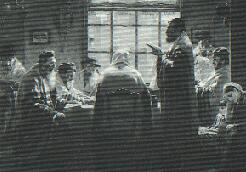Jewish area
Jew History
Nieuwmarkt
 Let’s
attack ;-) another interesting area of Amsterdam: the heart of the former Jewish
district. Amsterdam’s pragmatic tolerance in religious matters made it a magnet
for the Sephardic Jews who fled persecution in Spain and Portugal from the
beginning of the 17th century, and soon after, the Ashkenazi Jews, fleeing
intolerance in Eastern Europe. While many of the Sephardic Jews were prosperous
traders, the Ashkenazi refugees, often penniless, found it harder to gain a
foothold in commercial life. But the Jews had no full citizenship and were not
admitted in the corporations.
Let’s
attack ;-) another interesting area of Amsterdam: the heart of the former Jewish
district. Amsterdam’s pragmatic tolerance in religious matters made it a magnet
for the Sephardic Jews who fled persecution in Spain and Portugal from the
beginning of the 17th century, and soon after, the Ashkenazi Jews, fleeing
intolerance in Eastern Europe. While many of the Sephardic Jews were prosperous
traders, the Ashkenazi refugees, often penniless, found it harder to gain a
foothold in commercial life. But the Jews had no full citizenship and were not
admitted in the corporations.
They could freely
practise their religion, but at the condition to stay discreet and not interfere
with the Dutch laws. That’s why they want mostly in textile and diamonds where
there was no corporation. Rembrandt, who was not a Jew but a non-conformist
decided to settle down in this Jewish quarter. He lived for more than 20 years
in his atelier-house in the Jodenbreestraat. A lot of Jews living around him
became his friend and certain even served as model for his sketches and biblical
inspired paintings. Until the 19th century, when their position began to
improve, most Amsterdam Jews lived in the eastern part of the old city, where
grand synagogues and the homes of the wealthy merchants contrasted with the
cramped apartment dwellings of poorer working people.
Under the German
occupation, between 1940 and 1945, about 80% of the Amsterdam Jews (120,000)
were arrested, deported and murdered in the death camps (Sobibor, Auschwitz).
After the holocaust perpetrated by the Nazis, this old quarter was only a
ghost-populated area: empty houses, looted synagogues. Albert Camus puts these
words in the mouth of one of his personages in “La Chute”:”I live on the spot of
one of the most hideous crimes of human history”.
Especially since
Amsterdam’s Jewish community played a role in the city’s history out of all
proportion to their numbers. Old Amsterdam dialect is studded with Jewish words
borrowed from Hebrew and Yiddish, and lots of popular Amsterdam
delicacies—including such favourites as soused herring and pickled gherkins ---
originated with Jewish immigrants.
Let’s start our walk
from the NIEUWMARKT. This square and the streets surrounding it were the scene
in the mid 80’s of one of the set piece clashed between Amsterdam’s standing
army of socially conscious protesters and the municipality over planes for the
Metro. The local residents resisted large-scaling levelling of inner city
housing in the name of development. We heard that story elsewhere since quite
often, isn’t it? I sympathize, like most visitors I presume, with the
protesters. Inner Amsterdam is livelier and safer than the centres of most big
cities precisely because it has not been turned into a ghetto of office blocks.
The battle of the
Nieuwmarkt ended in a draw. The district is no longer the quiet neighbourhood of
cheap working-class accommodation it once was, but neither has the arrival of
the metro turned it into a yuppie heaven where accommodation would be too
expensive for ordinary Amsterdammers.
When there is no market
in progress the Nieuwmarkt square is unexciting, but the stout-castle like
building close to its northern corner is worth a look. The Sint-Antonie’spoort (St.Anthony
Gate) also known as “De Waag” (the weigh gate). The red brick tower built in
1488 is among the few remnants of the early city fortifications. Later, the
redundant gate-tower was turned into a weighing place for products for the
nearby foundry, which cast cannons and anchors for the ever-expanding Dutch
fleet. It was also the headquarters of the city guilds as well as a courtroom
and place of execution. Today it’s not at use.
Streaming powered by
Unreal Media Server
Back to
WebCamSue's Home Page
 Let’s
attack ;-) another interesting area of Amsterdam: the heart of the former Jewish
district. Amsterdam’s pragmatic tolerance in religious matters made it a magnet
for the Sephardic Jews who fled persecution in Spain and Portugal from the
beginning of the 17th century, and soon after, the Ashkenazi Jews, fleeing
intolerance in Eastern Europe. While many of the Sephardic Jews were prosperous
traders, the Ashkenazi refugees, often penniless, found it harder to gain a
foothold in commercial life. But the Jews had no full citizenship and were not
admitted in the corporations.
Let’s
attack ;-) another interesting area of Amsterdam: the heart of the former Jewish
district. Amsterdam’s pragmatic tolerance in religious matters made it a magnet
for the Sephardic Jews who fled persecution in Spain and Portugal from the
beginning of the 17th century, and soon after, the Ashkenazi Jews, fleeing
intolerance in Eastern Europe. While many of the Sephardic Jews were prosperous
traders, the Ashkenazi refugees, often penniless, found it harder to gain a
foothold in commercial life. But the Jews had no full citizenship and were not
admitted in the corporations.